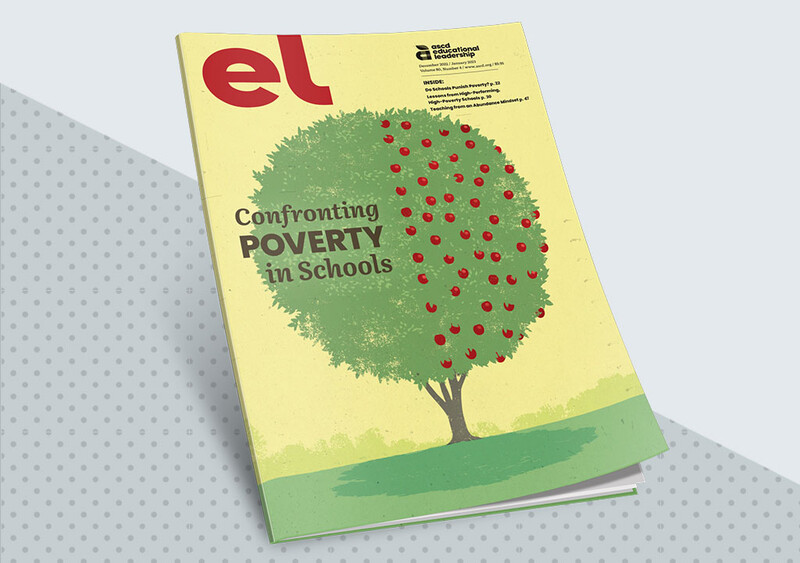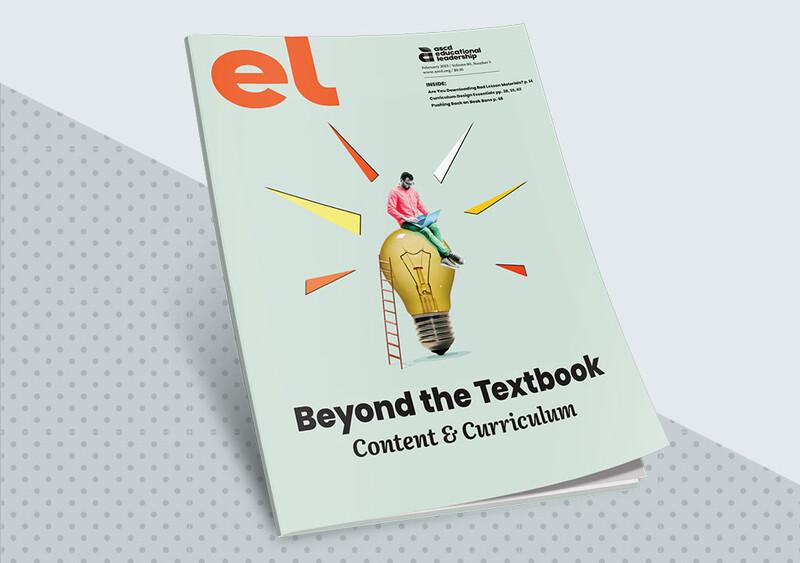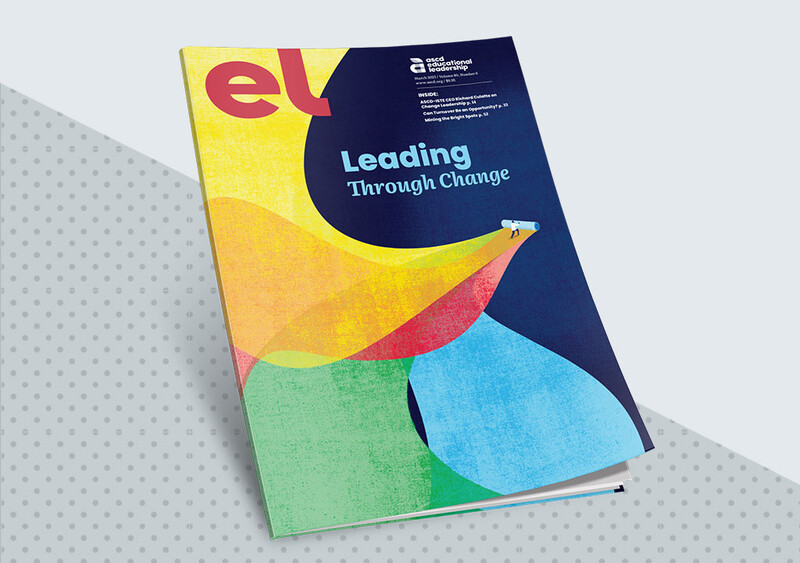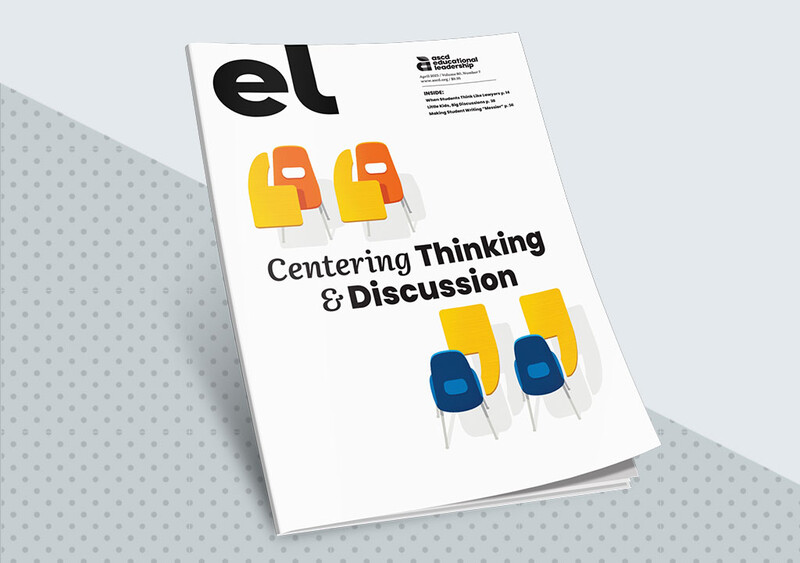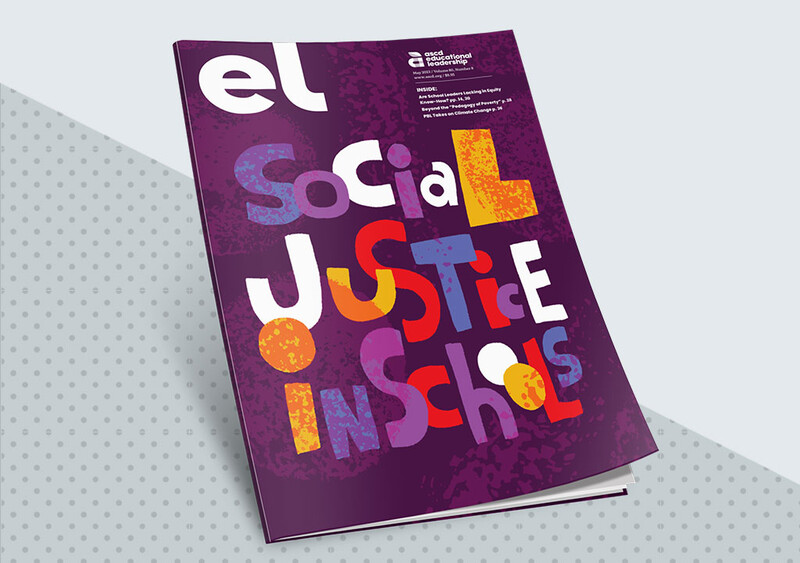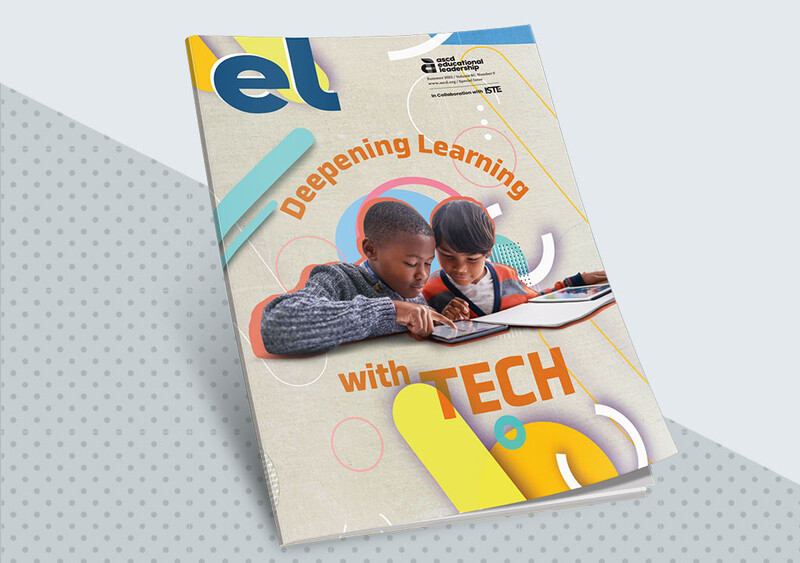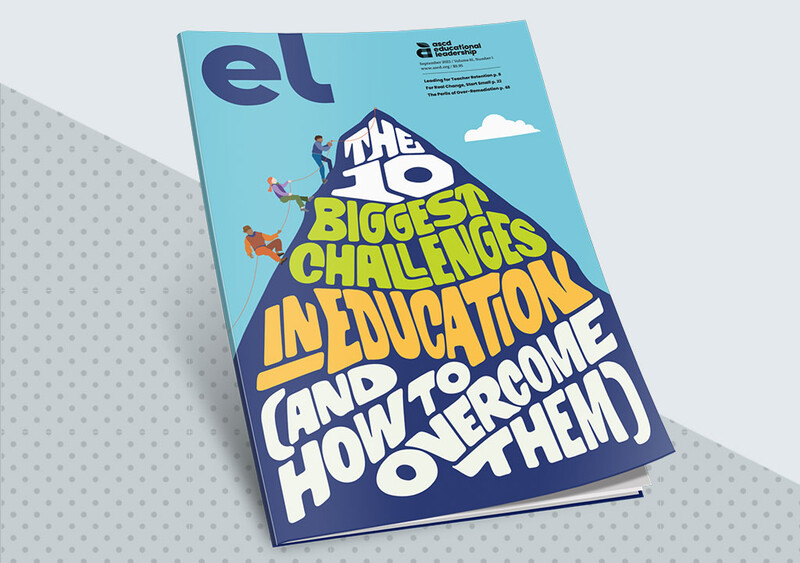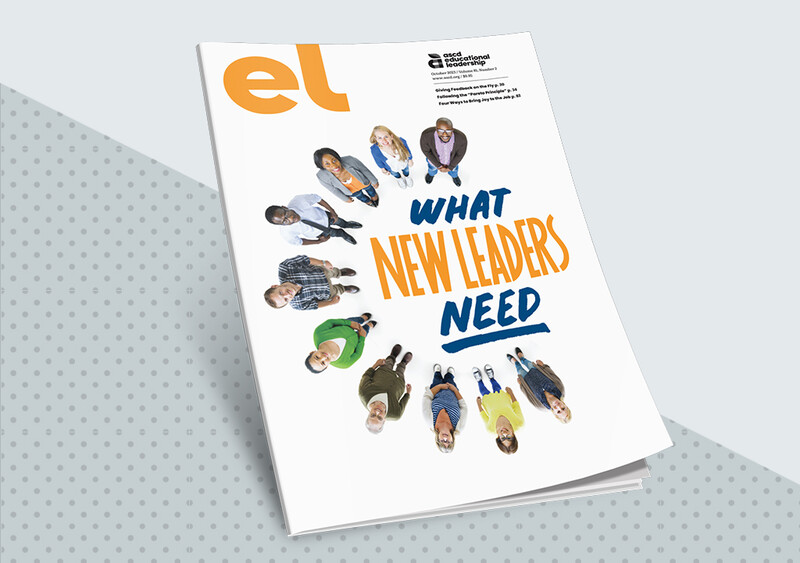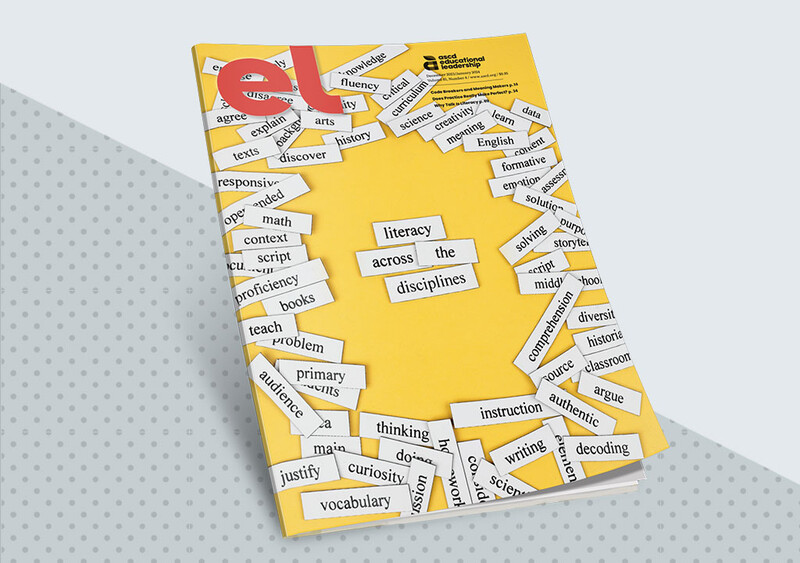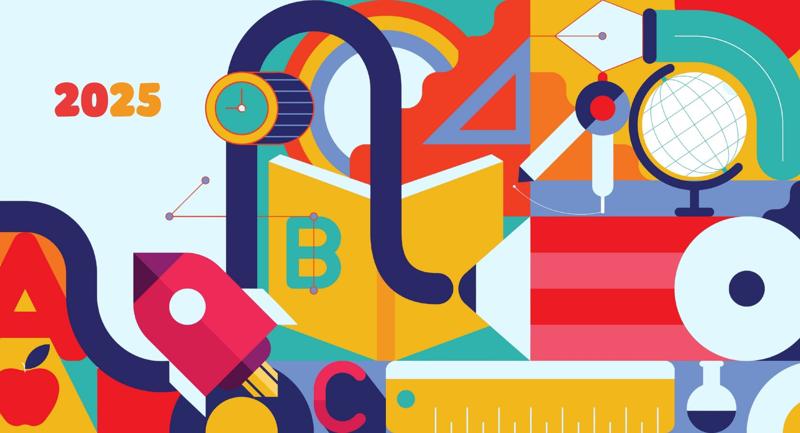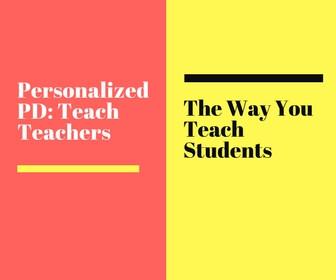Over the past ten issues of Educational Leadership magazine, we've drawn on the insights of educators, leaders, coaches, researchers, consultants—and readers like you—to tap into what’s most important in education today. The topics covered in these issues underscore the interconnection between classrooms and real-world contexts, emphasizing why it’s so vital to make learning relevant and meaningful to students’ lived experiences, as well as the value of situating social issues as lenses through which we can gain deeper insights into the challenges students, teachers, and administrators are facing in schools every day.
From centering student thinking and deepening learning, to addressing student behavior and cultivating meaningful classroom cultures, authors have emphasized why it’s crucial educators prioritize connections with their students. And it’s just as important, our authors write, to prioritize what educators need most as they lead through change, push for greater equity and justice in schools, and navigate an ever-evolving educational landscape.
Below, we’ve revisited the magazine's most-read articles, spotlighting the ways in which they offer practical guidance while fostering a deeper understanding of critical education topics. These articles aim to provide valuable perspectives and equip educators with actionable strategies to enhance their practice. Join us in reviewing ongoing challenges, celebrating school successes, and gaining inspiration for the educational journey ahead.
“We ask our students, every day, to take a step into the unknown,” says Scott Ervin. “To do this uncomfortable thing called learning, students must feel safe.” Feeling safe at school is especially critical for students who have experienced trauma, such as those living in generational poverty. In EL’s issue on Confronting Poverty in Schools, Ervin explains that specificity around classroom expectations helps vulnerable students feel safe and secure. “Behavioral leadership" strategies—like creating explicitly taught routines and strategically reinforcing positive behaviors—can empower students to help manage their own classroom spaces, allowing teachers to focus on relationship-building and delivering engaging lessons. Confronting Poverty in Schools
Strategies, understandings, and resources to support students living in economic instability and to reduce barriers to learning.
As today’s curriculum market grows increasingly dynamic and complex, educators need effective ways to streamline curriculum resources and clearly communicate educational content to students and their families. That’s where Heidi Hayes Jacobs and Allison Zmuda’s narrative approach can help. In EL’s Beyond the Textbook: Content and Curriculum, the authors explore how a storytelling approach to curriculum design helps teachers convey meaningful curricular choices to students and families. Storyboarding engages students in a learning journey and gives them a role to play as a “hero” of that journey, exploring ideas, solving problems, making connections, and acquiring skills. Make sure to check out the sample storyboard in Jacobs and Zmuda’s article and read our Q&A with the authors on the ASCD Blog. Beyond the Textbook: Content and Curriculum
How educators can better evaluate and develop curriculum resources to support instructional goals and student needs.
Sustainable change can happen within 100 days—if education leaders take the right approach. In their article for EL’s Leading Through Change, Douglas Reeves and Robert Eaker share a 100-day action plan aimed at finding the sweet spot between a too-careful, too-slow pace to change leadership and running the risk of initiative fatigue. What’s needed for effective change leadership is decisive action centered around three shifts in a leader’s approach: accelerating the pace of change to reflect the urgency of issues being addressed; moving from universal buy-in to evidence-based commitment; and replacing a fragmented approach, where leaders try too much at once, with a focused one that limits priorities to boost the success of change efforts. Leading Through Change
Practical strategies and guidance for education leaders to manage organizational change—both positive and negative.
Students can appear to be engaged, but are they really thinking deeply about their learning? Jim Heal and Bryan Goodwin unpack the pitfalls of superficial engagement and urge educators to create opportunities for substantive, “effortful” thinking from students. “We know that the depth of attention students exert should be taxing in some way for it to be effective,” write the authors, “something cognitive scientists refer to as ‘effortful thinking.’” Instructional approaches that prompt students to articulate their thought processes and think aloud as they work through complex problems are just a couple of “effortful” strategies the authors suggest as part of Centering Thinking and Discussion Skills. Centering Thinking and Discussion Skills
Ways educators can center students’ ability to think critically and discuss ideas with others in probing yet respectful ways.
When working to dismantle inequities and injustices, change can’t come from awareness alone. That’s why authors Paul Gorski and Katy Swalwell urge educators to move beyond awareness and take concrete actions to address barriers to equity and justice in EL’s Social Justice in Schools issue. The authors outline five “transformative” equity and justice skills—that is, skills that can change awareness into action—and unpack what it looks like in practice to recognize, respond to, redress, actively cultivate, and sustain equity. “For every bit of equity awareness, every discussion of personal bias, let's ask ourselves, ‘How am I translating this into real change?’” Social Justice in Schools
How schools can more actively promote social justice and fairness in their curricula as well as in their policies and structures.
“Teachers who differentiate instruction are educational designers, professionals who possess the skills and expertise to address the diverse learning needs of their students,” write Clare Kilbane and Natalie Milman in Deepening Learning with Technology, a special digital summer issue of EL co-created by ASCD and ISTE. When teachers view themselves as educational designers, they are better equipped to think intentionally about how to implement digital tools—and how any edtech tool should further equitable, efficient, effective, and engaging learning (what the authors call the “4Es”). Technology, when used thoughtfully, can support transformational learning that encourages students to apply and actively create knowledge. Deepening Learning with Technology
In collaboration with ISTE, this issue explores how technology can redefine and enrich learning in the aftermath of the pandemic.
To create the September issue, The 10 Biggest Challenges in Education (and How to Overcome Them), EL surveyed educators across the country to identify top challenges in today’s schools. As part of the issue, Carla Shalaby examined educator responses to student behavior, calling for a shift from control-oriented approaches to modeling what care looks like and emphasizing community-building within (and beyond) the classroom. Shalaby puts forward five “transformative behavior standards,” pillars that support educators and students in “design[ing] classroom life as an opportunity to responsibly practice freedom instead of doubling down on the failed strategy of control.” The 10 Biggest Challenges in Education (and How to Overcome Them)
In this “user’s manual” for educators, authors unpack top challenges facing schools today.
Veteran educators and instructional coaches A. Keith Young & Angela Bell Julien say having frequent, targeted conversations with teachers is key to effective leadership for new principals. As part of EL’s issue on What New Leaders Need, the authors emphasize that numerous, quick feedback sessions can be more effective than only offering lengthy annual or biannual teacher evaluations—especially when it comes to strengthening communication as a new principal. The authors suggest four main instructional coaching strategies that include praising teachers’ specific actions, differentiating frequency of feedback based on teacher needs, varying feedback delivery methods, and maintaining brief, to-the-point interactions. What New Leaders Need
Whether they are principals, district administrators, or teacher leaders, new leaders face steep challenges and require specialized support.
Finding effective ways to respond to student behavior—and cultivate a more positive classroom community—was a concern that surfaced repeatedly across 2023. In The Challenge of Challenging Behavior, author Kelly Bicknell addresses teachers who are feeling unsupported with difficult student behavior and offers five practical strategies for managing classrooms without relying solely on administrators. Bicknell’s strategies emphasize the importance of working with students, when possible, under the assumption that students generally want to make good choices: “Have a plan. Set expectations. Follow through when they're not met. Talk to parents. Control what you can,” writes Bicknell. “You'd be surprised at how much these small changes together can really transform your classroom.” The Challenge of Challenging Behavior
Ways educators can constructively address and resolve difficult student behaviors while supporting students’ growth and dignity.
“What does disciplinary literacy actually look like in my content area?” That's the question ReLeah Cossett Lent set out to answer—in close collaboration with researchers, teachers, coaches, and administrators—over a decade ago. Two books and hundreds of workshops later, Lent offers EL readers an easy-to-implement chart as part of Literacy Across the Disciplines. The chart is organized around core and non-core content areas and offers insights into what it means for students to read, write, and think in each discipline. "The chart is a dynamic tool," says Lent, "open to ongoing revision based on experiences in the classroom, new thinking from researchers, and new understandings about the role literacy plays in our lives, our students’ lives, and our society as a whole." Literacy Across the Disciplines
How schools can embed meaningful reading and writing practice in all content areas.
